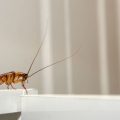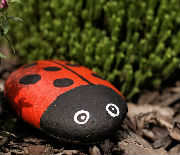Many find squirrels to be adorable and lively animals. Though they look sweet, if squirrels find their way into your house they can cause major annoyance. Like other animals, they search for isolated, safe places to nest; so knowing how to keep squirrels away from your house is crucial. Your house can offer the ideal surroundings for them.
There are many reasons why a squirrel might seek shelter in your home. In this article, we explain what they are, as well as how to deal with an undesirable squirrel tenant and prevent them from moving in in the first place.
Table of Contents
Why are squirrels attracted to your home?
Among the top three reasons why squirrels might be roaming about your property are:
Food supply
All animals seek out food. If you have bird feeders, nuts or fruit trees, you probably already have squirrels living on your property.
It is a well-known fact that bird seeds attract them from miles away. Infestations can occur quickly if there are more than a few feeders. It is easy for squirrels to get into most places because they are expert climbers, but keeping the feeders away from your house will deter them from coming near it. In addition, there are squirrel-proof bird feeders that have a special shape or barrier that prevents squirrels from getting into the feed.
Simply protecting the feeders won’t do the trick, though – squirrels also eat insects, fungi, fruits and vegetables, among other things. If you feed your pets outside, make sure you don’t leave any uneaten food out. Take it back inside after they’ve finished eating or seal it up when not in use.
Check also: What do squirrels eat
Entry points
A squirrel can easily move from your yard to your attic if they find an access point. Consider installing gutter guards and covers for downspouts so they don’t get access to your home from the roof. Tree branches that hang over your roofline should be trimmed, otherwise, they provide squirrels with a perfect path to your house.
You should also keep an eye out for cracks, crevices and openings large enough for squirrels to squeeze through. Any gaps that you find need to be sealed with caulk or expandable foam. A hole is usually seen as an invitation by these animals, especially during the winter. By sealing any access points, you can prevent squirrels from taking up residence in your house.
Shelter
Attics are generally more appealing to squirrels than other rooms. Dry, warm, and protected from predators, lofts offer many benefits.
If the squirrel gains access to your loft, it will divide it into different sections. One is used for defecating, one for sleeping, one for eating, and one for giving birth (if the squirrel is female). This fluffy vermin will make a bed from your insulation, tearing it up to make it as warm as possible.
Having squirrels in your attic is a concern because they gnaw on electrical wires and boards. The most serious problems often arise from nesting females. Squirrel nests are frequently built near openings, such as vents without screens or loose, rotted or damaged trim. It’s strongly advisable to hire a squirrel control specialist if you are unable to remove a mother and her babies on your own.
Check also: How to get rid of grey squirrels in loft or attic
Signs of squirrels in your house
Understanding the signs of a squirrel infestation will enable you to respond fast before any major damage results. Particularly in dawn or dusk, unusual sounds like scratching or scurrying in your attic or walls point to a likely squirrel presence. Usually more active at these times, squirrels are the first thing homeowners usually notice moving into their house.
Finding droppings in the attic or near doors is another obvious indicator of a squirrel issue. Being able to distinguish between the two pests is crucial since squirrel droppings resemble those of rats in scale. Search also for evidence of chewed wiring, gnawed wood, or damage to your insulation and roofing materials.
A squirrel infestation is most clearly shown by the existence of a nest. Usually constructed from insulating material, twigs, leaves, and other soft waste. Should you discover a nest in your attic, the squirrel most certainly has been there for some time and could even be rearing young.
A bad smell can also indicate squirrels in your house. When squirrels defecate in one area of their “territory,” the accumulation of excrement can cause bad smells to leak through the walls. Apart from bad smells, you could find more squirrel activity outside your house, including regular sightings of squirrels around your gutters or roof.
Keeping squirrels away from your house
Keeping squirrels away from your house calls for proactive and preventative actions. Often driven to homes in quest of food, warmth, and cover, these clever creatures make your house less appealing, so controlling an infestation mostly depends on making your house less appealing.
Remove food sources
Since squirrels enjoy simple meals, first you should take care of the food surrounding your house. They can be drawn in part by fruit trees, pet food, and bird feeders. Try to put your bird feeder at least 10 feet from your house and choose a squirrel-proof feeder to discourage them from snacking. Regularly remove fallen fruits or nuts from your garden; for squirrels, these can be like a buffet. If your pets eat outside, also be sure to pick up any leftovers and refrain from putting dishes out overnight. This keeps not only squirrels but other animals as well away.
Trim overhanging trees
Amazing climbers and squirrels find almost a freeway in tree branches close to your house. Squirrels can readily hop onto your house and maybe enter if you have branches hanging over your roof. Cut any branches close to your roof to avoid this. Ten feet is plenty. Cutting off these access points will make it more difficult for them to come inside.
Secure any entry point
Check your house for any holes or cracks since squirrels can fit through rather small openings. Look first for any areas that might let them in your attic vents, eaves, and roof. Block their access by sealing these cracks with expanding foam or caulk. Make sure your vent screens are secure as well; you might want to think about mesh covering air vents or chimney tops. Squirrels adore utilising your gutters and downspouts to climb up onto your roof, so be sure you cover them.
Use squirrel repellents
A few natural and commercial choices can help deter squirrels from invading homes. Areas sprayed with peppermint oil, vinegar, or garlic will repel them since they detest strong smells. Also available for use around your house or garden are commercial squirrel-repellent grains. Try motion-activated sprinklers or lights if you wish to go even further. The squirrels will be startled by the unexpected movement or noise, which will also make your house seem less inviting.
Block access to your roof
Squirrels can sneak onto your roof from surrounding buildings including fences, sheds, or trees. Install gutter guards to stop this; they make climbing more difficult. Metal flashing can also be wrapped over tree bases close to your house, increasing their difficulty of ascent. They are less likely to enter your roof if they have fewer avenues of access.
Conclusion
If squirrels find their way into your house, they can do serious harm even if they look adorable. Professional aid is the best course of action whether you’re unsure how to keep squirrels away from your house or if you’re dealing with an active infestation. Experts possess the tools and experience required to safely remove squirrels and stop their comeback.
Are you dealing with a pest infestation?
You don't have to be alone in the battle against pests. Hire a professional pest expert!
Call us










Leave a Reply